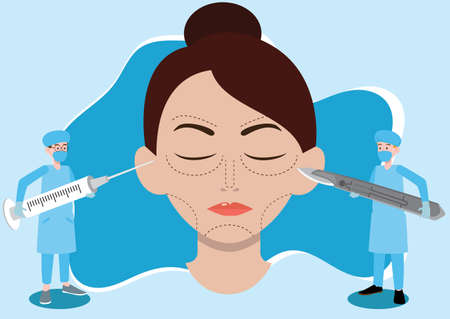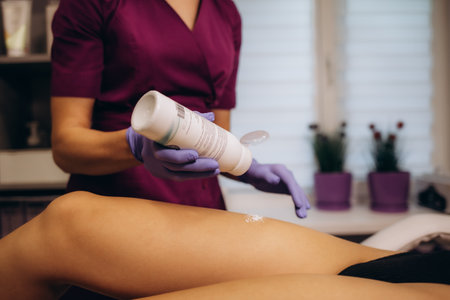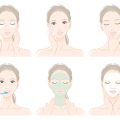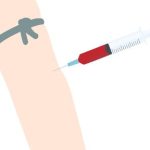1. Why Cooling and Calming Care Matters After Procedures
If you’ve just had a cosmetic treatment like laser resurfacing, microneedling, or a chemical peel, your skin is likely feeling sensitive, warm, or even a bit inflamed. This is totally normal—these procedures are designed to boost your skin’s renewal process but can also leave it temporarily stressed. That’s why choosing the right cooling and calming skincare is essential for comfortable and speedy recovery.
How Your Skin Reacts Post-Procedure
After any aesthetic treatment, your skin’s natural barrier can become compromised. Common symptoms include:
| Symptom | Description |
|---|---|
| Redness | Flushed appearance that may last hours to days |
| Sensitivity | Tenderness, stinging, or tightness when touched |
| Swelling | Puffiness around the treated area |
| Warmth | A feeling of heat or burning on the skin’s surface |
Why Cooling and Calming Ingredients Help
Soothing products help reduce redness and discomfort by lowering inflammation and replenishing moisture. Cooling ingredients can instantly ease that hot, prickly sensation and prevent further irritation. Look for these key benefits in your post-procedure skincare:
- Hydration: Keeps skin from drying out and supports healing.
- Anti-Inflammatory Action: Minimizes swelling and calms redness.
- Barrier Repair: Restores the protective layer so your skin heals faster.
- Sensory Relief: Provides an immediate soothing effect so you feel more comfortable throughout recovery.
The American Approach to Skincare Recovery
In the U.S., dermatologists and aestheticians often recommend fragrance-free, gentle formulas with proven soothing ingredients like aloe vera, colloidal oatmeal, or panthenol after in-office treatments. Using ice packs or chilled gel masks is also a popular at-home method for instant relief. Prioritizing these steps not only helps your skin look better, but also makes your overall experience more positive.
2. Key Ingredients for Post-Procedure Relief
When your skin is healing after a cosmetic procedure, choosing products with the right ingredients makes all the difference. In the US, many cooling and calming skincare items are packed with gentle, effective components that help soothe irritation, reduce redness, and speed up recovery. Here are some of the most popular ingredients you’ll find in post-procedure relief products.
Aloe Vera
Aloe vera is a classic go-to for calming irritated skin. It’s well-loved for its soothing and hydrating properties, making it perfect for sensitive or inflamed skin after treatments like lasers, peels, or microneedling. Aloe helps cool down hot, stressed skin and supports the natural healing process.
Centella Asiatica (Cica)
Centella asiatica, often called “cica” in skincare products, is another superstar ingredient. It’s known for its ability to calm redness and help repair damaged skin. This plant extract has been used for centuries in traditional medicine but has become a favorite in modern American skincare for its gentle, non-irritating benefits.
Colloidal Oatmeal
Colloidal oatmeal is finely ground oats suspended in liquid, which allows it to form a protective barrier on the skin. In the US, this ingredient is approved by the FDA as a skin protectant. It’s especially helpful for calming itchiness and reducing inflammation after dermatological procedures.
Other Soothing Ingredients
Besides these top choices, you’ll also see ingredients like panthenol (pro-vitamin B5), allantoin, and chamomile extract in many post-procedure formulas. These add extra comfort and moisture while helping your skin recover faster.
Comparison Table: Popular Post-Procedure Relief Ingredients
| Ingredient | Main Benefits | Common Uses |
|---|---|---|
| Aloe Vera | Soothes & hydrates; reduces redness | Laser treatments, sunburns, chemical peels |
| Centella Asiatica (Cica) | Calms irritation; helps repair skin barrier | Microneedling, facial resurfacing |
| Colloidal Oatmeal | Protects & relieves itching; reduces inflammation | Irritated or sensitive skin post-procedure |
| Panthenol (B5) | Adds moisture; promotes healing | Diverse post-procedure care routines |
| Chamomile Extract | Cools; anti-inflammatory properties | Mild redness or sensitivity after treatment |
Selecting products with these ingredients can help ensure a smoother and more comfortable recovery after your cosmetic procedure. Always look for labels that highlight these soothing components to give your skin the gentle care it deserves during healing.

3. Top Dermatologist-Recommended Products
After a skin procedure, choosing the right products can make all the difference in your recovery. American dermatologists often recommend certain cooling and calming skincare items that help soothe irritation, reduce redness, and support your skin’s natural healing process. Here are some of the top picks you’ll find in many post-procedure care routines:
Popular Cooling & Calming Skincare Products
| Product Name | Main Benefits | Why Dermatologists Recommend |
|---|---|---|
| Avene Cicalfate+ Restorative Protective Cream | Reduces irritation, calms inflammation, supports healing | Gentle formula with thermal spring water; ideal for sensitive and post-procedure skin |
| La Roche-Posay Cicaplast Baume B5 | Soothes discomfort, repairs skin barrier, provides hydration | Packed with panthenol (vitamin B5) and madecassoside to speed up recovery and calm redness |
| EltaMD Skin Recovery Serum | Cools, hydrates, reduces visible redness | Lightweight serum recommended for post-laser or chemical peel treatments; contains antioxidants for extra protection |
| Eucerin Advanced Repair Cream | Deep moisture, calms dryness and flaking | Rich in ceramides to strengthen the skin’s moisture barrier after procedures like microneedling or dermabrasion |
| Vanicream Moisturizing Cream | Non-irritating hydration for sensitive skin types | No dyes, fragrance, or lanolin; safe for even the most delicate post-procedure skin conditions |
| Bioderma Cicabio Arnica+ | Reduces bruising and swelling, soothes discomfort | Often suggested after fillers or injectables to minimize visible side effects quickly |
| Thermal Spring Water Sprays (Avene, La Roche-Posay) | Cools instantly, eases tightness and burning sensations | Mist is easy to use throughout the day for instant relief; recommended for any type of post-procedure discomfort or sensitivity |
What Makes These Products Stand Out?
- Simplicity: Most are free from harsh ingredients like fragrances and alcohol.
- Mild Formulas: Designed specifically to not trigger further irritation.
- Dermatologist-Tested: Trusted by professionals for safety and effectiveness.
- Easily Accessible: Widely available at American drugstores and online retailers.
How to Use Them Safely at Home?
- Patch test first: Always try a small amount before applying all over your face or affected area.
- Follow your dermatologist’s instructions: Every skin procedure is different—ask your provider which products best suit your needs.
- Avoid unnecessary extras: Stick to these basics until your skin fully recovers.
- No rubbing or scrubbing: Gently pat creams or sprays onto your skin instead of rubbing them in.
Expert Tip:
If you’re ever unsure about a product, bring it with you to your follow-up appointment. Your dermatologist can help you decide if it’s the right fit for your specific recovery process.
4. How to Use Cooling Skincare Products Effectively
Step-by-Step Guide for Post-Procedure Relief
After a cosmetic treatment, your skin needs extra care and attention. Incorporating cooling and calming skincare products into your daily routine can make a huge difference in your recovery and comfort. Here’s how you can use these products effectively to help soothe redness, reduce swelling, and support healing.
When to Apply Cooling Products
| Time of Day | Recommended Product Type | Why It Helps |
|---|---|---|
| Morning | Cooling gel or hydrating serum | Refreshes skin, reduces overnight puffiness, preps for sunscreen |
| Afternoon (as needed) | Mist or soothing spray | Quick relief from heat or irritation, easy reapplication |
| Evening | Cream or sleeping mask with calming ingredients | Supports overnight recovery, locks in moisture, soothes skin after a long day |
Tips for Maximum Soothing and Recovery
- Store products in the fridge: Keeping your gels, masks, or sprays chilled enhances their cooling effect and provides instant relief on contact.
- Apply with clean hands: Always wash your hands before touching post-procedure skin to avoid introducing bacteria.
- Avoid rubbing: Gently pat products onto your skin instead of rubbing, which could irritate sensitive areas.
- Layer gently: Start with the lightest product (like a serum), then follow with thicker creams. Let each layer absorb fully before applying the next.
- Pace yourself: Don’t overload your skin with too many new products at once—introduce one at a time and monitor how your skin responds.
- Sunscreen is non-negotiable: Always apply a broad-spectrum sunscreen as the final step in your morning routine to protect healing skin from UV damage.
Sample Daily Routine for Post-Treatment Skin
| Step | Product Example | Description/Purpose |
|---|---|---|
| 1. Cleanse (AM & PM) | Mild foaming cleanser or micellar water | Cleans without stripping moisture; gentle for sensitive skin. |
| 2. Cool & Soothe (AM & PM) | Aloe vera gel or thermal water spray | Cools down hot spots; calms irritated areas. |
| 3. Hydrate (AM & PM) | Hyaluronic acid serum or lightweight moisturizer | Keeps skin plump and hydrated without clogging pores. |
| 4. Protect (AM) | Mineral sunscreen SPF 30+ | Covers and shields vulnerable post-treatment skin from sun exposure. |
| 5. Overnight Care (PM) | Cica-based sleeping mask or peptide cream | Aids in overnight repair and strengthens the skin barrier. |
5. What to Avoid: Post-Procedure Skincare Don’ts
After a cosmetic procedure, your skin is extra sensitive and needs special care. Using the wrong products or habits can slow down healing or even cause irritation. Here’s what you should avoid for the smoothest recovery, based on US skincare standards.
Common Irritating Ingredients to Steer Clear Of
| Ingredient | Why to Avoid | Commonly Found In |
|---|---|---|
| Fragrance (Parfum) | Can trigger redness, itching, and allergic reactions on sensitive post-procedure skin. | Moisturizers, serums, cleansers |
| Alcohol (Denatured Alcohol/Ethanol) | Dries out skin and can increase irritation or stinging. | Toners, astringents, some gels |
| Retinoids (Retinol, Retin-A) | Potent actives that may disrupt healing and cause peeling or burning sensations. | Anti-aging creams, acne treatments |
| Acids (AHAs/BHAs like Glycolic, Salicylic Acid) | Exfoliates aggressively—too harsh for recovering skin. | Chemical exfoliants, acne products |
| Essential Oils (Lavender, Citrus, Peppermint) | Natural but can be highly sensitizing post-procedure. | “Clean” beauty products, oils, moisturizers |
| Sulfates (Sodium Lauryl/Laureth Sulfate) | Strips skin of moisture; leads to dryness and discomfort. | Cleansers, shampoos |
Habits That Can Harm Healing Skin
- Avoid Hot Water: Stick with lukewarm water when cleansing; hot water can worsen irritation and dryness.
- No Scrubbing or Exfoliating: Don’t use facial scrubs, brushes, or rough towels—gentle patting only!
- Don’t Pick or Peel: Let flaking or scabbing heal naturally; picking increases risk of scars and infection.
- No Tanning Beds or Direct Sun: UV exposure delays healing and increases the chance of hyperpigmentation—wear a wide-brimmed hat if you go outside.
- Avoid Heavy Makeup: Especially in the first few days; it can clog pores and disrupt the barrier repair process.
- No Intense Workouts: Excessive sweating and heat may aggravate your skin right after treatment.
If You’re Unsure—Check With Your Provider!
Your dermatologist or aesthetician knows your skin best. If you’re uncertain about a product ingredient or routine, ask them before using anything new during your recovery period. Stick to gentle basics and give your skin time to heal—it’ll thank you!


